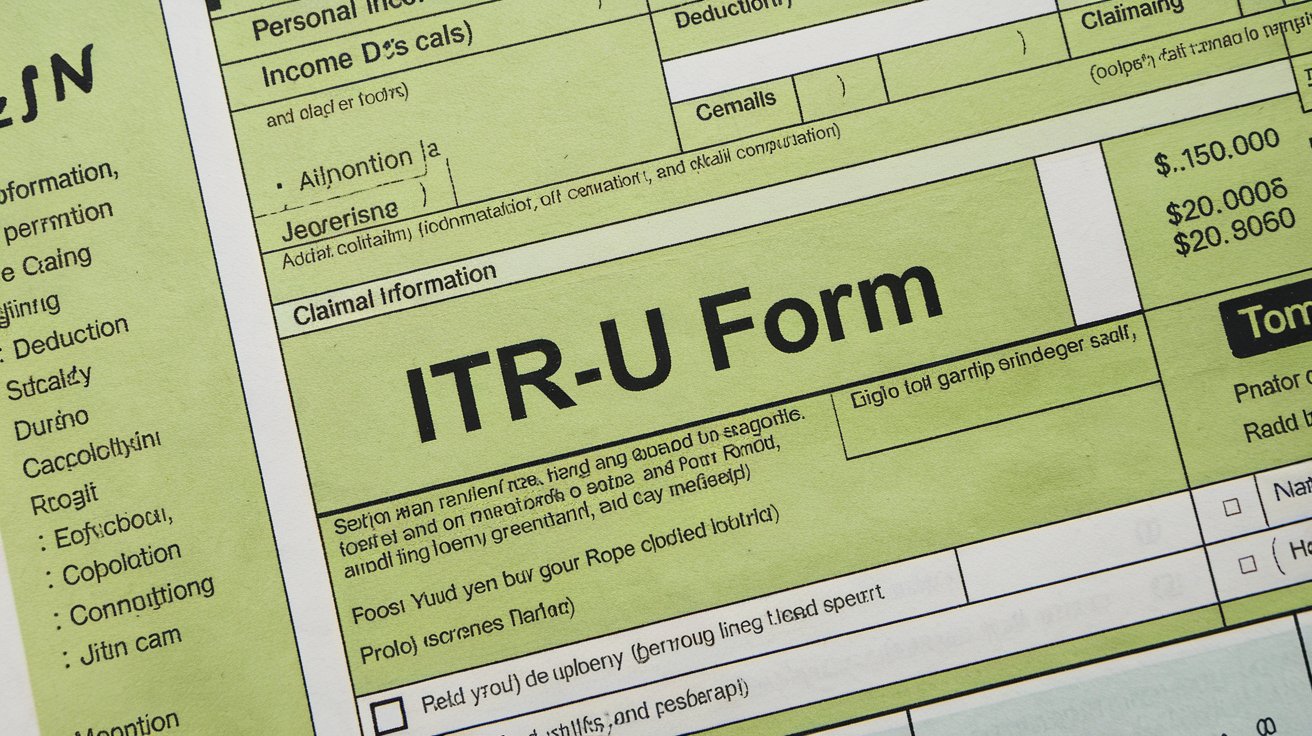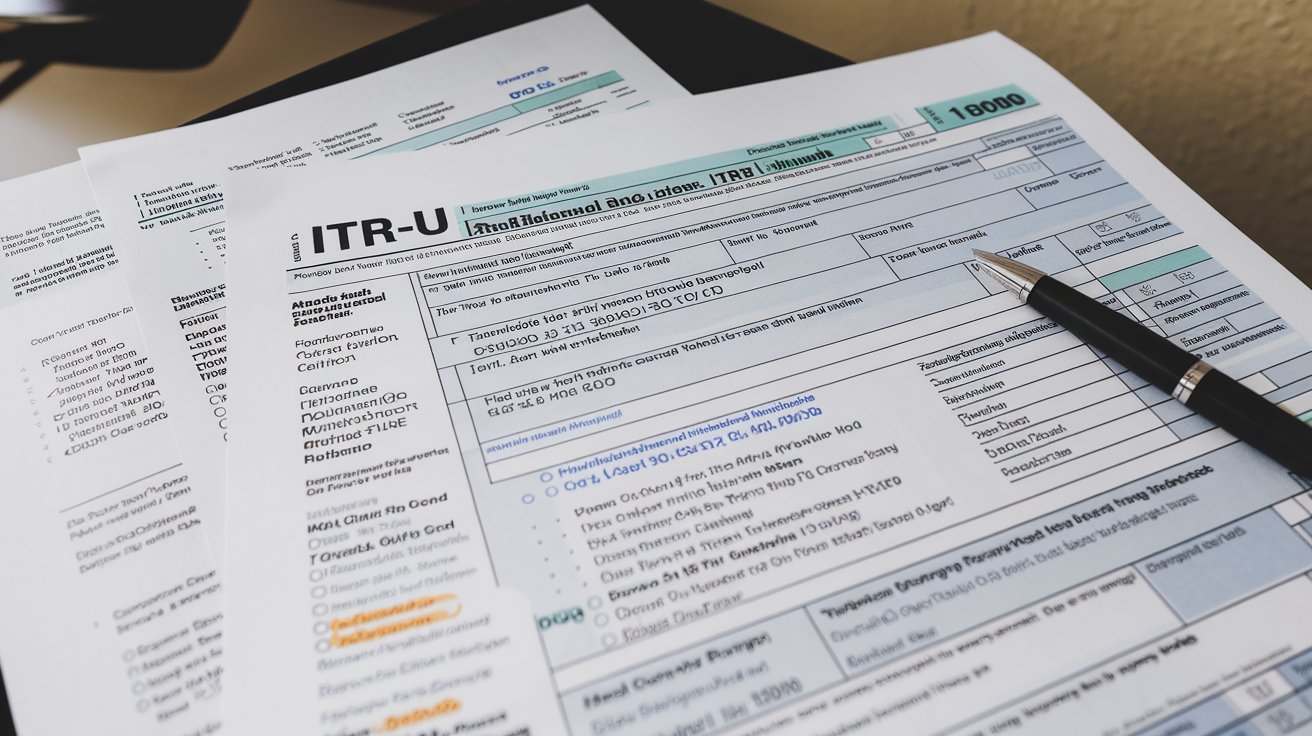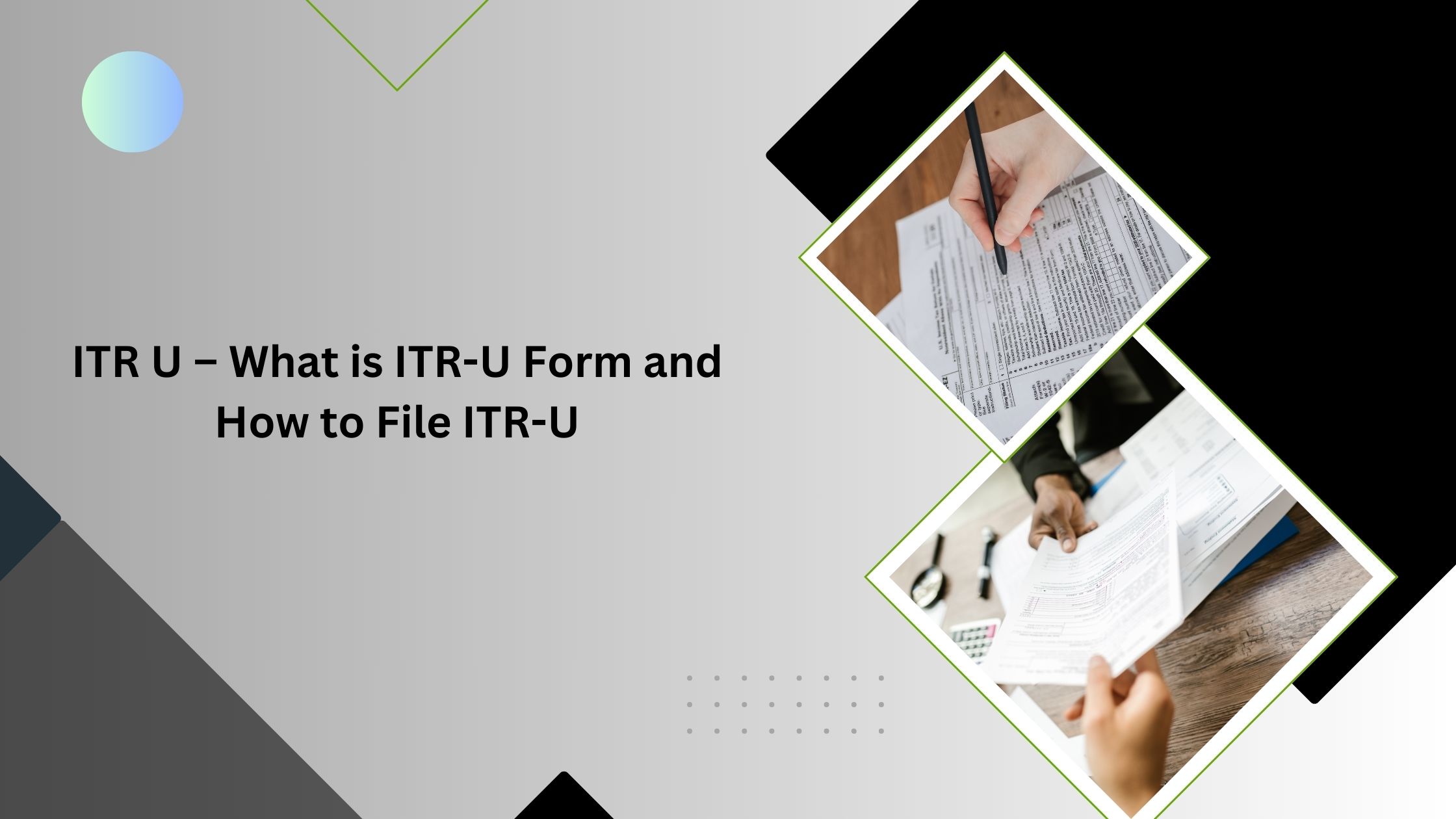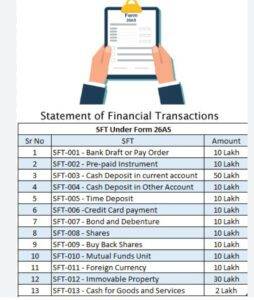What is ITR-U?
ITR-U form, or the Updated Income Tax Return, is a provision that enables taxpayers to rectify mistakes or omissions in their previously filed returns. This form also allows individuals to file a return if they missed the original and belated return filing deadlines. The concept of updated returns was introduced in the Union Budget 2022 to promote voluntary tax compliance.

Budget 2025 Update
As per the latest announcement in Budget 2025, the deadline for taxpayers to submit an updated return (ITR-U) has been extended from two years to four years from the end of the relevant assessment year (AY). This extension aims to ease tax compliance by giving taxpayers more time to correct errors while ensuring a transparent taxation process. However, an additional tax must be paid when filing an ITR-U, calculated as follows:
Additional Tax Rates for ITR-U Form Filing
ITR-U Filed Within | Additional Tax (on tax + interest) |
12 months from the end of the relevant AY | 25% |
24 months from the end of the relevant AY | 50% |
36 months from the end of the relevant AY | 60% |
48 months from the end of the relevant AY | 70% |
It is important to note that belated or revised returns cannot be filed after December 31st of the AY. However, ITR-U can be submitted starting from January 1st of the assessment year to rectify minor discrepancies. ITR-U cannot be used to claim refunds, increase losses, or reduce tax liability.

Who Can File ITR-U Form?
An individual or entity can file ITR-U under Section 139(8A) of the Income Tax Act if they need to correct any errors or omissions in the following types of returns:
- Original Return
- Belated Return
- Revised Return
Situations Where ITR-U Form Can Be Filed:
- Failure to file an income tax return within the due date.
- Incorrect disclosure of income details.
- Mistakenly selecting the wrong head of income.
- Incorrect tax rate applied while filing the return.
- Need to reduce carried-forward losses.
- Adjustment required for unabsorbed depreciation.
- Modification of tax credits under Section 115JB/115JC.
A taxpayer is allowed to file only one updated return per assessment year.
Who Cannot File ITR-U?
ITR-U form cannot be filed in the following cases:
- An updated return has already been submitted for the same assessment year.
- Filing of a nil return or a loss return.
- Attempting to claim a refund or increase the refund amount.
- If filing an updated return would lower tax liability.
- When tax authorities have initiated a search under Section 132.
- If a survey under Section 133A has been conducted.
- When books, documents, or assets have been seized under Section 132A.
- If assessment/reassessment/revision/re-computation is already underway or completed.
- If no additional tax liability exists after adjusting TDS, losses, or other credits.
Note: If an updated return results in a reduction of carried-forward loss, unabsorbed depreciation, or tax credit, an updated return must be filed for each affected assessment year.
Time Limit to File ITR-U form
The deadline for submitting an updated return is within 48 months (4 years) from the end of the relevant assessment year.
Financial Year | Assessment Year | Last Date to File ITR-U |
2020-21 | 2021-22 | 31st March 2024 |
2021-22 | 2022-23 | 31st March 2025 |
2022-23 | 2023-24 | 31st March 2026 |
2023-24 | 2024-25 | 31st March 2027 |
How to File ITR-U?
The updated return (ITR-U) must be submitted along with the applicable ITR form (ITR-1 to ITR-7). The form consists of two sections:
Part A: General Information
Personal & Filing Details
- A1: PAN
- A2: Name
- A3: Aadhaar Card Number
- A4: Assessment Year
- A5: Select Yes if you filed the return previously for the assessment year.
- A6: If Yes, check the ITR acknowledgement to determine if it was filed u/s 139(1) or other sections.
- A7: Enter the form number, acknowledgment number, and date (DD/MM/YYYY) of filing the original return (found in the ITR acknowledgement).
- A8: Verify eligibility conditions and select the appropriate option.
- A9: Select the correct ITR form number.
- A10: Choose at least one reason for updating the ITR-U (multiple selections allowed).
- A11: If 12 months have elapsed since the end of the financial year, select ‘12-24 months’; otherwise, choose ‘up to 12 months’.
- A12: If the updated return impacts carried-forward losses or unabsorbed depreciation, mention the affected assessment year and whether a revised/updated return was previously filed.
Part B: Computation of Updated Income and Tax Payable
- Declare additional income for each income head (detailed breakdown not required).
- Enter income declared in the last return.
- Total income (as per Part B-TI of the filed ITR form).
- Tax payable amount (from Part B-TT of the ITR form).
- Amount refundable, if applicable.
- Tax paid as per last return (including any refund claimed/received with interest).
- Late filing fee, if applicable.
- Regular assessment tax paid in the last return.
- Aggregate liability on additional income.
- Additional tax liability (25% or 50% of the computed amount).
- Net tax payable.
- Self-Assessment Tax (u/s 140B) – Pay the tax and enter the challan details.

How to Verify ITR-U?
ITR-U must be verified using one of the following methods:
- Aadhaar OTP
- Electronic Verification Code (EVC)
- Digital Signature Certificate (DSC) (mandatory for tax audit cases)
How to Compute Tax Payable for ITR-U?
Total tax liability when filing ITR-U is calculated as follows:
Total Tax Liability = Tax Payable + Interest + Late-Filing Fees + Additional Tax
Net Tax Liability = Total Tax Liability – (TDS/TCS/Advance Tax/Tax Relief)
Particulars | Amount (₹) |
Tax Payable on Additional Income | XXXX |
Interest Under Sections 234A/234B/234C | XXXX |
Late Fee (if applicable) | XXXX |
Taxes Paid (TDS/TCS/Advance Tax) | XXXX |
Refund Issued (if any) | XXXX |
Additional Tax (25% or 50% on net liability) | XXXX |
Net Amount Payable | XXXX |
Need Help?
FAQs
Q1: What is Form ITR-U?
Form ITR-U is an updated income tax return that allows taxpayers to revise their previously filed returns within 24 months from the end of the relevant assessment year. It was introduced to enhance tax compliance while avoiding litigation. KMG CO LLP can help you with ITR-U Form.
Q2: Can I file ITR-U if I missed the original ITR filing deadline?
Yes, you can still file ITR-U even if you missed the original deadline. However, you will be required to pay:
- Late filing fees u/s 234F
- Additional tax of 25% or 50% on the tax payable, depending on when you file it
Q3: Is there any penalty for filing ITR-U?
There is no penalty if an original return was filed. However, if the original return was not filed, a penalty u/s 234F is levied. Additionally, an extra tax u/s 140B is applicable, which is:
- 25% of tax and interest if filed within 12 months
50% of tax and interest if filed between 12-24 months
Q4: Can I claim an extra carryforward loss under ITR-U?
No, under Section 139(8A), you cannot increase your carryforward loss or unabsorbed depreciation. You can only reduce it.
Q5: What documents are required for revalidation of 12A and 80G?
Yes, you can file ITR-U. However, even if your income is below ₹5 lakh, you will still be liable for late filing fees, which must be paid under the “Taxes Paid under 140B” tab.
Q6: When is the last date to file ITR-U for FY 2023-24?
The last date to file ITR-U for FY 2023-24 is 31st March 2027.
Q7: Can I file a Nil return using ITR-U?
No, ITR-U cannot be filed for a Nil return. It can only be filed when there is an additional tax liability.
Q8: Can I change the ITR form number while filing an updated return?
Yes, if your income details change, requiring a switch from ITR-1 to ITR-2, ITR-3, or ITR-4, the system will allow such updates.
Q9: What are the benefits of filing ITR-U?
Filing ITR-U helps in:
- Avoiding Scrutiny assessment (Section 143(3))
- Preventing Best Judgment Assessment (Section 144)
- Avoiding Income Escaping Assessment (Section 147)
- Preventing survey, search, and seizure proceedings
Q10: How many times can I update my return using ITR-U?
A taxpayer can file ITR-U only once for a particular assessment year. Multiple revisions are not allowed.
Q11: Can I claim an additional refund through ITR-U?
No, ITR-U cannot be used to claim an additional refund. It is only applicable when there is extra tax liability.
Q12: What are the reasons for filing ITR-U?
ITR-U can be filed for reasons such as:
- Omitting income in the original return
- Wrong tax calculation
- Incorrect income category selection
Paying lower taxes than required
Q13: Who is not eligible to file ITR-U?
ITR-U cannot be filed if:
- The updated return results in a refund
- The return is filed to increase a loss carryforward
- A search, survey, or seizure action has been initiated against the taxpayer
Q14: How do I pay the additional tax for filing ITR-U?
The additional tax liability must be paid before filing ITR-U. The payment details must be updated under the “Taxes Paid under 140B” tab.
Table of Contents
Toggle



